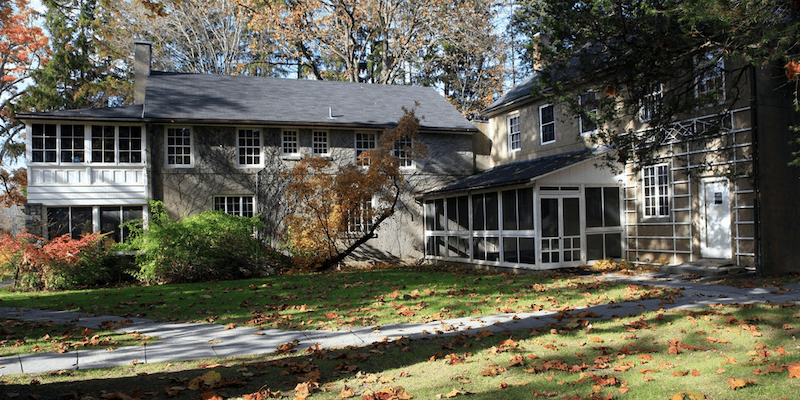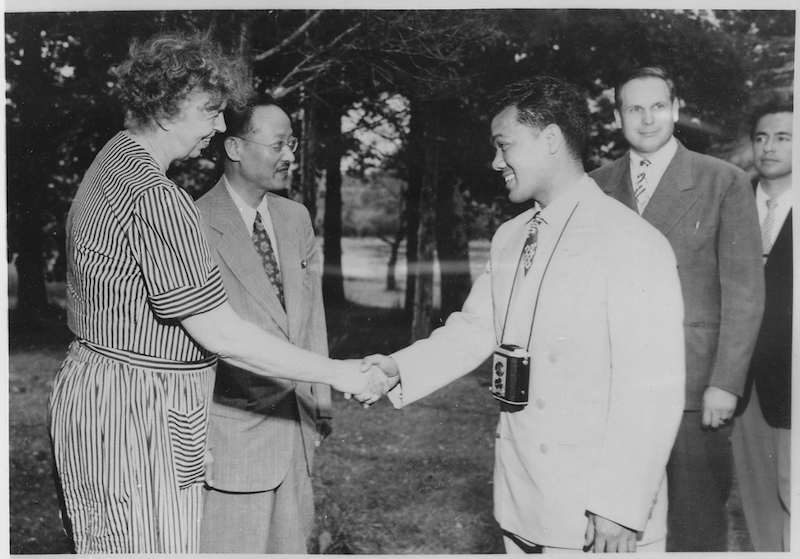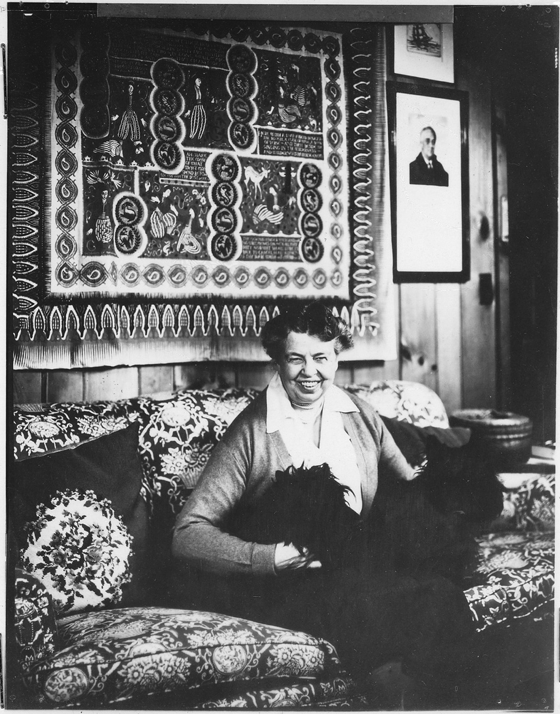Defining Stories – The Power of Legacy and Place
Written by: Sophia Triantafyllopoulos

While working at the OCLP this summer, I had the opportunity to create several cultural landscape profiles for the diverse national parks and sites across the Northeast region of the United States. Immediately, I was drawn to the Eleanor Roosevelt National Historic Site (ELRO) located in Hyde Park, New York. Also referred to as Val-Kill, this woodland site served as her primary residence before and after FDR’s death. As I worked on the ELRO landscape profile, I realized that out of the many national historic sites I have visited across the United States, I had not been to one devoted to women’s history. Although there are many sites across the country that celebrate and highlight important American women, ELRO is one of the few national park sites devoted to women’s history and is the only historic site dedicated to a first lady.
Like many American teenagers, I intensely studied President Franklin Delano Roosevelt in school. After all, he transformed American society and politics, arguably more so than any of his predecessors, during the longest tenure in American history. Even today, it is difficult to not mention FDR when discussing The Great Depression or World War II. Who I did not learn about in such detail, was First Lady Eleanor Roosevelt, a politically active humanitarian and social justice advocate in her own right.

Today, Val-Kill functions as a portal into Eleanor’s public and private life, where the public can witness a living reminder for how landscapes not only influence the people that inhabit them, but the ways in which their legacy survives. Eleanor’s achievements and personal experiences are displayed throughout the property’s various structures and landscape features, such as the pool, gardens, tennis court, and walking trails. The natural and built elements function as a physical and visual timeline visitors can experience. In doing so, they establish a narrative –Eleanor’s story. Well before her time in the White House, Eleanor held business ventures most notably, Val-Kill Industries, a small factory on the estate property, financed and operated by her and two close friends. The factory enabled local farming families to supplement their income by creating hand-made wood furniture. Although the factory closed in the 1930s, Eleanor continued to use the space for her own personal lodgings and her advocacy work.
Eleanor maintained her autonomy upon becoming First Lady by establishing a public presence that redefined the first lady role from that of a social hostess to an active participant within her husband’s administration. Her accomplishments included bringing widespread attention to racial discrimination and women’s rights. She continued to use Val-Kill as a personal retreat from the White House where she would write newspaper columns and host various gatherings, from more personal family events to politicians and officials from around the world. Even after FDR died, Eleanor used Val-Kill as her primary residence and to sponsor camps and youth organizations to promote civic duty.

The task of packaging a cohesive 1500-word narrative for a person as prolific as Eleanor and for a site as meaningful as Val-Kill presents unique challenges. For one, Eleanor’s time at Val-Kill resulted in many stories and accomplishments. Deciding which elements to weave together while considering their ability to capture attention from readers was a challenge due to the large amount of fascinating information available. The next obstacle was my inability to witness the site in person. No matter how much one reads about a place, the tangible qualities one experiences as they move through space are necessary when understanding place.
Although, I am unable to visit Val-Kill this summer, I still feel a sense of connection through the research, writing, and compilation of digital inventory I have undertaken thus far. My goal is that these efforts display a narrative of Eleanor’s life and legacy, one which is intricately intertwined with the landscape of Val-kill. By preserving and maintaining the site, we thus can preserve and honor Eleanor’s memory and her contributions to social justice. The cultural landscape profiles illustrate how essential written and visual communication are in creating a story that sparks curiosity for people who have not had the opportunity to visit the site in person. They serve as a steppingstone to the multifaceted histories that all national park service sites hold.
Visit ACE online to learn more about EPIC and other conservation programs.
